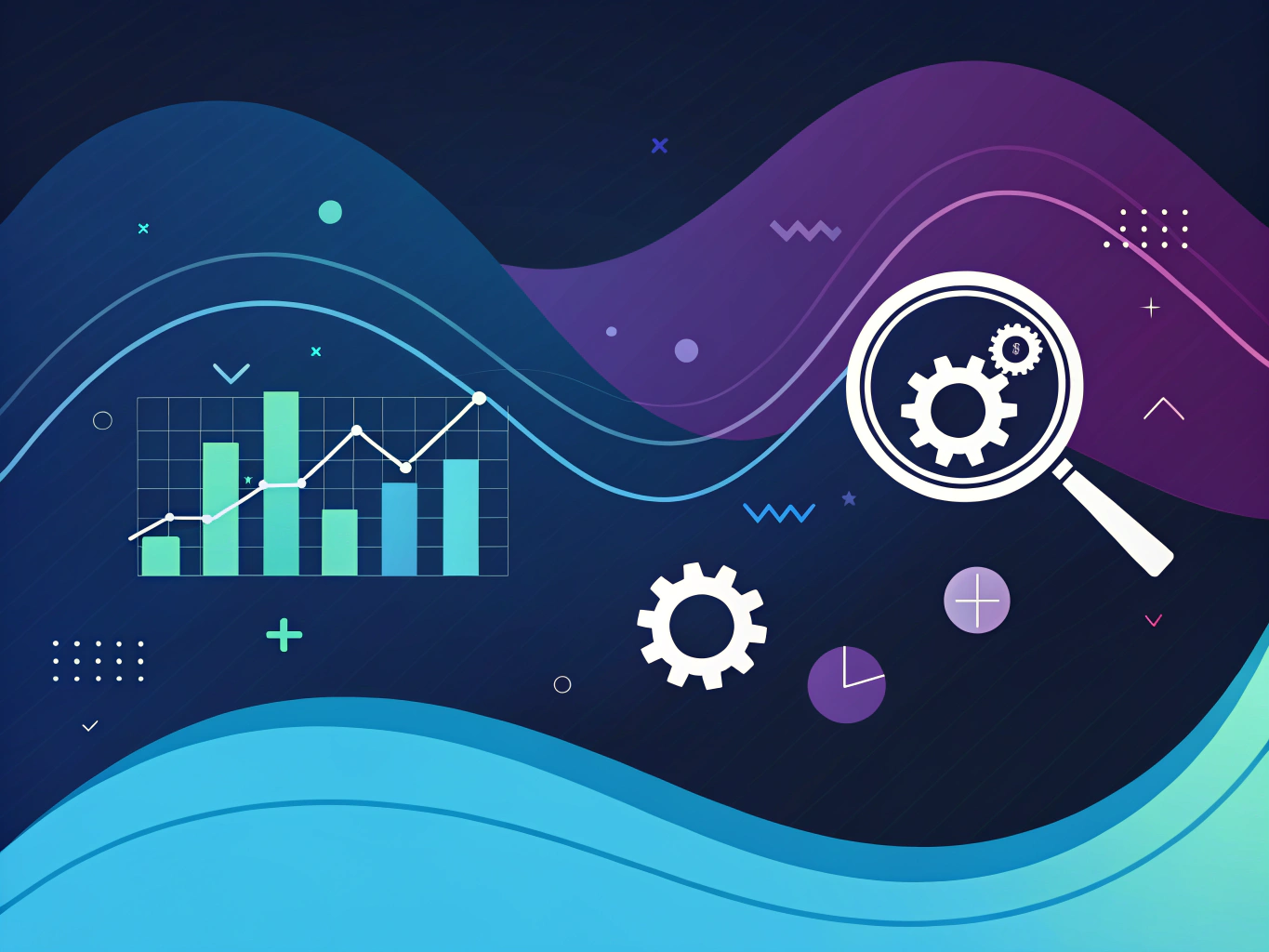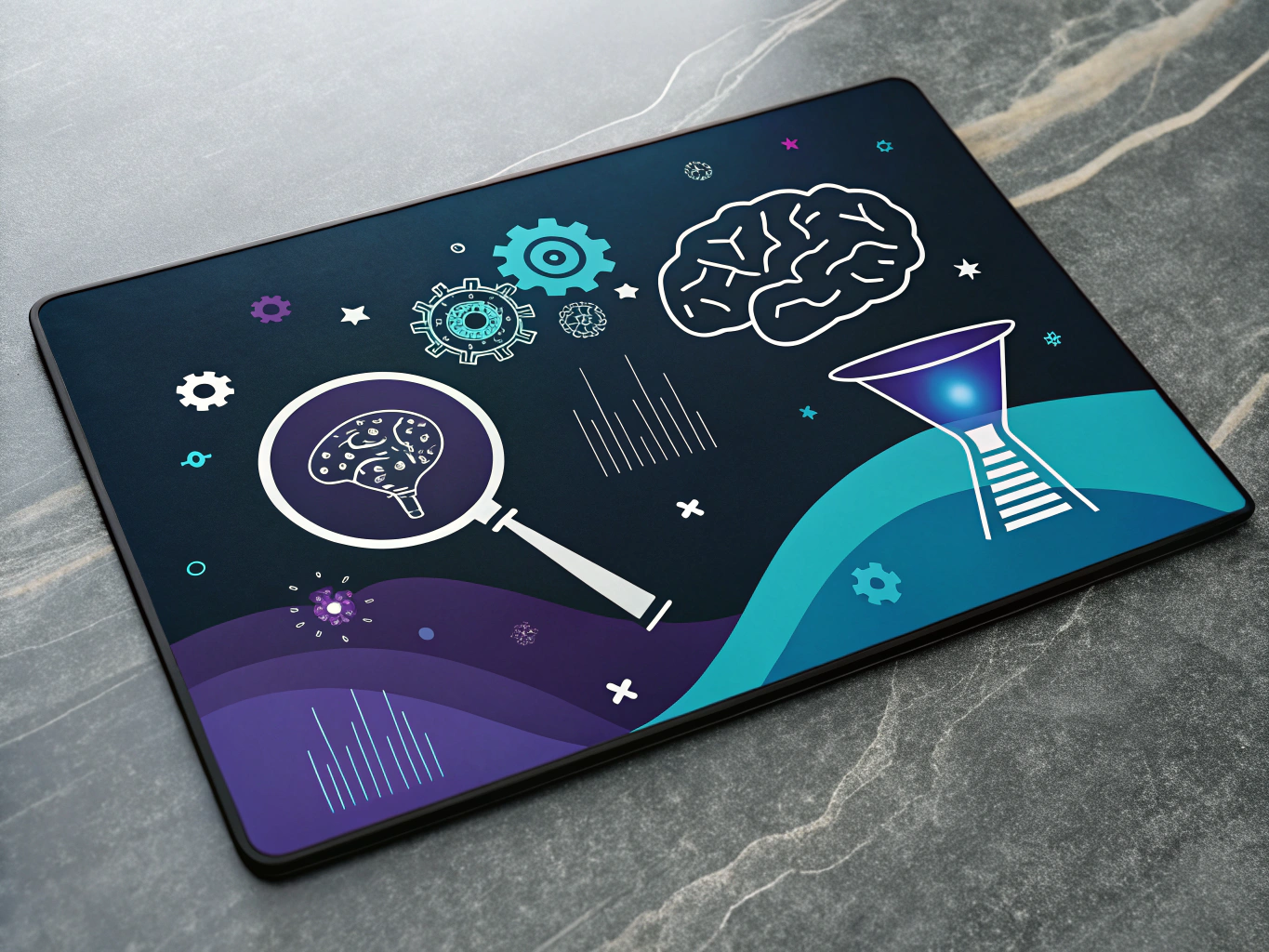The Truth About Conversion Rate Optimization Nobody’s Talking About
Here’s a wild thought: we’ve been approaching conversion rate optimization all wrong. While everyone’s obsessing over button colors and heat maps (guilty as charged), we’re missing something fundamental about how humans actually make decisions online.

I’ve spent the last decade watching brands pour millions into CRO programs that barely move the needle. Meanwhile, some scrappy upstart comes along with a fraction of the budget and absolutely crushes it. What gives?
The answer lies in understanding what conversion rate optimization really is – not just the textbook definition of “increasing the percentage of website visitors who take desired actions,” but the psychology and science behind why people click that “Buy Now” button in the first place.
What is Conversion Rate Optimization? (Hint: It’s Not What You Think)

Let’s cut through the jargon. At its core, conversion rate optimization (CRO) is about making it ridiculously easy for people to say “yes” to whatever you’re offering. It’s like being the perfect host at a party – you’re not forcing anyone to dance, but you’re creating an environment where people naturally want to join in.
Think of your website as a digital storefront. CRO isn’t about tricking people into buying – it’s about removing every possible obstacle between your visitor’s desire and their action. It’s the difference between a store with clear signage and helpful staff versus one where you can’t find what you’re looking for and nobody’s around to help.
The Psychology Behind Why People Convert (Or Don’t)
Here’s something fascinating: humans make decisions in milliseconds, but we spend hours rationalizing them afterward. This isn’t just some random factoid – it’s the key to understanding why traditional CRO often fails.
Most CRO efforts focus on the rational brain – the part that compares features and prices. But that’s like trying to convince someone to fall in love by showing them a spreadsheet of your best qualities. The emotional brain makes the decision long before the rational brain catches up. Learn more about conversion optimization tips that tap into this psychology.
The Real Difference Between SEO and CRO (And Why You Need Both)
If SEO is about getting people to your digital party, CRO is about making sure they have such a good time they never want to leave. One without the other is like having a gorgeous store in the middle of nowhere – or a terrible store on Main Street.
The Synergy of Search and Convert
Here’s where it gets interesting: the best CRO strategies actually improve your SEO, and vice versa. Think about it – Google wants to send users to sites that provide great experiences. When your conversion optimization is on point, you’re essentially telling search engines, “Hey, people love it here!” Discover conversion strategies that can enhance your SEO efforts.
The Three Pillars of Modern CRO

After analyzing thousands of ecommerce sites through ProductScope AI, I’ve noticed three core elements that consistently drive conversions:
1. Trust Signals That Actually Work
Forget those generic trust badges everyone uses. Real trust comes from showing, not telling. User-generated content, authentic reviews (yes, including the negative ones), and transparent pricing do more for your conversion rate than any “secure checkout” badge ever will.
2. Friction-Free Pathways
Every click should feel like the natural next step. It’s like those moving walkways at airports – you’re still walking, but it feels effortless. The best CRO removes friction so subtly that users don’t even notice it’s happening.
3. Personalization That Matters
But here’s the catch – not the creepy “we’re watching your every move” kind of personalization. I’m talking about the kind that makes users think, “Finally, someone gets what I’m looking for!” It’s about showing relevant options based on actual behavior, not assumptions.
The Tools That Actually Move the Needle
Let’s be real – the conversion rate optimization tools landscape is more crowded than a New York subway at rush hour. But after testing pretty much everything out there, here’s what actually works:
- Heatmapping tools (but only if you know what you’re looking for)
- A/B testing platforms (when used with proper statistical significance)
- Session recording software (for those face-palm moments when you see users struggling)
The key isn’t which tools you use – it’s how you use them. I’ve seen companies with all the fancy tools in the world fail because they’re measuring the wrong things. Meanwhile, others crush it with just Google Analytics and a good understanding of their customers.
The Psychology Behind Successful Conversion Rate Optimization

Let’s get real for a second – we’ve all been there. You’re staring at your analytics dashboard, watching visitors bounce off your site like they’re playing digital hopscotch. Your traffic numbers look decent, but conversions? They’re about as rare as a perfectly drawn hand in AI-generated art.
Here’s the thing about conversion rate optimization (CRO) that most “experts” won’t tell you: it’s not just about following a checklist of best practices. It’s about understanding the weird, wonderful, and sometimes irrational way humans make decisions online.
The Science of Digital Decision Making
Think about the last time you made a purchase online. Was it purely logical? Probably not. You might have been influenced by that review from someone who sounds just like your best friend, or maybe it was the free shipping threshold that made you add one more item to your cart. That’s the psychology of conversion in action.
Breaking Down the Elements of Effective CRO
The difference between SEO and CRO is like the difference between getting people to show up to your party (SEO) and getting them to actually dance (CRO). Both matter, but they serve different purposes in your digital marketing strategy.
Value Proposition: Your Digital Handshake
Your value proposition isn’t just some corporate buzzword – it’s your digital handshake. It needs to answer the “why should I care?” question before visitors even have time to ask it. And no, “We’re the leading provider of innovative solutions” doesn’t count. That’s the equivalent of wearing a name tag that says “Hello, I’m a person.”
Friction Points: The Digital Roadblocks
Every click, every form field, every moment of hesitation is potential friction. I’ve seen countless ecommerce sites turn their checkout process into an obstacle course worthy of American Ninja Warrior. Your goal? Make it feel more like a slip-n-slide.
Tools and Techniques That Actually Work

The world of conversion rate optimization tools can feel like walking into a hardware store blindfolded. There’s a tool for everything, but which ones actually matter? Let me break it down without the usual marketing fluff.
Analytics: Beyond the Basic Numbers
Google Analytics is great, but it’s like having a weather app that only tells you the temperature. You need tools that show you the full picture – heatmaps that reveal where visitors actually look, session recordings that show rage clicks, and form analytics that tell you where people nope out of your checkout process.
A/B Testing: The Scientific Method for Digital Marketing
A/B testing isn’t just about changing button colors (though sometimes that matters more than we’d like to admit). It’s about testing hypotheses about human behavior. Think of it as running a psychology experiment where your lab is your website.
The Mobile-First Reality Check
If your CRO strategy doesn’t prioritize mobile, you might as well be optimizing for dial-up internet. The reality is that most of your visitors are probably reading this on their phones right now, possibly while waiting for coffee or pretending to pay attention in a meeting.
Speed: The Silent Conversion Killer
Page speed isn’t just a technical metric – it’s a direct reflection of how much you respect your visitors’ time. Every second of load time is like watching potential customers walk out of your store. And trust me, they’re not the patient type.
Trust Signals and Social Proof

In the digital world, trust signals are your store’s equivalent of having a clean, well-lit storefront. Reviews, testimonials, security badges – these aren’t just decorations. They’re the digital version of word-of-mouth marketing.
The Art of Persuasive Copy
Your website copy needs to do more than just describe what you’re selling. It needs to speak to the human behind the screen. That means understanding their fears, desires, and yes, even their tendency to procrastinate on making decisions.
Measuring Success: Beyond Basic Metrics
Is conversion rate optimization worth it? That’s like asking if exercise is worth it. The answer is yes, but only if you’re measuring the right things and doing it consistently. Your conversion rate is just one piece of a larger puzzle that includes customer lifetime value, return rates, and overall business health.
The most successful ecommerce brands don’t just focus on conversion rates – they obsess over the entire customer journey. They understand that every interaction, from first click to final purchase, is an opportunity to build trust and create value.
Building Trust Through Conversion Psychology
Let’s be real – we’ve spent decades obsessing over traffic metrics while treating conversion optimization like that awkward cousin at family gatherings. But here’s the thing: all the traffic in the world won’t help if your site converts about as well as a brick wall.
The psychology behind conversion rate optimization isn’t rocket science, but it does require understanding how humans actually make decisions (spoiler alert: not always rationally). Think of your website as a digital storefront where every element either builds or erodes trust.
The Trust-Building Toolkit for Modern Ecommerce
Remember when adding a simple “secure checkout” badge was enough to make people feel safe online? Those days are long gone. Today’s consumers are like digital detectives, scanning for multiple trust signals before they’ll even consider pulling out their credit cards.
Here’s what actually moves the needle in 2024:
- Social proof that feels authentic (not those obviously fake testimonials)
- Transparent pricing without hidden fees jumping out like a jack-in-the-box at checkout
- Clear return policies written in human language, not legalese
- Real-time inventory updates that don’t lead to disappointment
The Future of Conversion Rate Optimization
If you think CRO is just about A/B testing button colors, you’re stuck in 2010. The future of conversion optimization looks more like a sci-fi movie – minus the killer robots. We’re talking AI-powered personalization that actually works, predictive analytics that spot conversion issues before they tank your revenue, and immersive experiences that make today’s product pages look like ancient cave drawings.
The AI Revolution in CRO
AI isn’t going to replace your CRO team (sorry, ChatGPT), but it’s absolutely going to transform how we approach optimization. Imagine having an AI assistant that constantly monitors your conversion funnel, identifies patterns human analysts might miss, and suggests optimization opportunities in real-time.
But here’s where it gets really interesting: AI-driven CRO tools are starting to understand context in ways that were impossible just a few years ago. They’re not just tracking what users do – they’re understanding why they do it.
Privacy-First Optimization
With third-party cookies crumbling faster than my attempts at actual baking, we need to rethink how we gather and use customer data. The future of CRO will be built on first-party data and zero-party data – information customers willingly share because they trust us and see value in the exchange.
Making CRO Work in Your Organization
Look, I’ve seen too many companies treat CRO like a one-time project – something to check off their digital transformation bingo card. But real conversion optimization is more like tending a garden than building a house. It needs constant attention, regular pruning, and occasional replanting when things aren’t growing as expected.
Creating a Culture of Testing
The most successful companies I’ve worked with don’t just do CRO – they live it. Every team member, from the CEO to the newest intern, understands that optimization isn’t just about lifting conversion rates – it’s about creating better experiences for real humans.
This means:
- Celebrating failed tests as learning opportunities (not hiding them like embarrassing high school photos)
- Making data-driven decisions without losing sight of human intuition
- Breaking down silos between marketing, design, and development teams
Final Thoughts: The Human Side of CRO
At its core, conversion rate optimization isn’t about manipulating people into buying things they don’t want. It’s about removing obstacles between people and the solutions they’re already looking for. It’s about making the digital world a little more human, a little more helpful, and a lot less frustrating.
The best CRO strategies don’t just improve metrics – they create experiences that make people’s lives better. And in a world where every click, scroll, and tap generates data, we can’t forget that behind each of those interactions is a real person with real needs, real frustrations, and real desires.
As we move forward into an increasingly AI-driven future, the most successful brands will be those that use technology to enhance human connections, not replace them. That’s what conversion rate optimization is really about – using data and technology to create more meaningful human experiences.
And isn’t that worth optimizing for?
👉👉 Create Photos, Videos & Optimized Content in minutes 👈👈
Related Articles:
- Conversion Rate Optimization Services: A 7-Step Framework
- Conversion Rate Optimization: 5 Tactics That Doubled Sales
- Increase Online Business Sales: Let AI Optimize Your Listings and
Frequently Asked Questions
What do you mean by conversion rate optimization?
Conversion rate optimization (CRO) is the process of enhancing a website or landing page to increase the percentage of visitors who complete a desired action, such as making a purchase or signing up for a newsletter. This involves analyzing user behavior, conducting tests, and making data-driven changes to improve the overall user experience and ultimately drive more conversions.
What is the difference between SEO and CRO?
SEO (Search Engine Optimization) and CRO (Conversion Rate Optimization) are both strategies aimed at improving a website’s performance, but they focus on different aspects. SEO focuses on increasing a site’s visibility and attracting more traffic from search engines by optimizing content and technical elements, whereas CRO focuses on maximizing the effectiveness of the existing traffic by improving the user experience and encouraging conversions.
What is Shopify conversion rate optimization?
Shopify conversion rate optimization involves implementing strategies specifically tailored to improve the sales performance of an online store built on the Shopify platform. This can include optimizing product pages, improving checkout processes, enhancing site speed, and utilizing apps and integrations to create a seamless shopping experience that encourages customers to complete purchases.
Is conversion rate optimization worth it?
Yes, conversion rate optimization is worth it because it allows businesses to maximize their marketing efforts by getting more value from existing traffic, rather than solely focusing on generating new visitors. By improving conversion rates, businesses can increase revenue, improve customer satisfaction, and gain a competitive edge without necessarily increasing marketing spend.
What is an example of conversion optimization?
An example of conversion optimization is A/B testing different versions of a call-to-action button on a landing page to determine which version results in more users completing a sign-up form. By analyzing the performance of each variation, businesses can make informed decisions on which design or wording is more effective at encouraging users to take the desired action.
About the Author
Vijay Jacob is the founder and chief contributing writer for ProductScope AI focused on storytelling in AI and tech. You can follow him on X and LinkedIn, and ProductScope AI on X and on LinkedIn.
We’re also building a powerful AI Studio for Brands & Creators to sell smarter and faster with AI. With PS Studio you can generate AI Images, AI Videos, Blog Post Generator and Automate repeat writing with AI Agents that can produce content in your voice and tone all in one place. If you sell on Amazon you can even optimize your Amazon Product Listings or get unique customer insights with PS Optimize.
🎁 Limited time Bonus: I put together an exclusive welcome gift called the “Formula,” which includes all of my free checklists (from SEO to Image Design to content creation at scale), including the top AI agents, and ways to scale your brand & content strategy today. Sign up free to get 200 PS Studio credits on us, and as a bonus, you will receive the “formula” via email as a thank you for your time.
